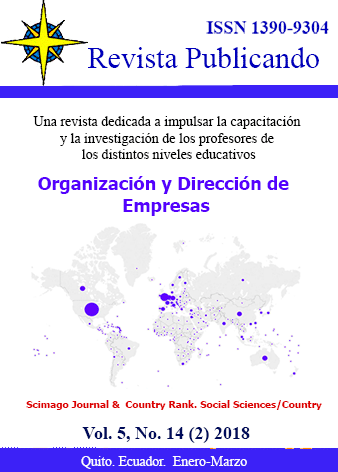Abstract
The present study was conducted to investigate the effect of job burnout on the performance of the employees of the Justice Department (Case study: Employees of the Justice Department of Alborz Province).The research method is a descriptive-analytic type that is based on the structural equation model. The community consists of 728 administrative and judicial employees in the province of Alborz, which includes eight groups with different population ratios.For example, 252 of them were selected randomly by stratified random sampling. The measurement tool in this study is a questionnaire. To assess the appropriateness of its validity and reliability, it was measured. The questionnaire had the necessary content validity and also to determine the reliability of the questionnaire, Cronbach's alpha method was used. Cronbach's alpha coefficient for the whole questionnaire was 0.923, therefore, the validity of this instrument was confirmed.The results of the structural equation analysis on the proposed model showed that the model has a good and acceptable fit and showed that job burnout has a positive and significant effect on the performance of the employees of the Justice Department.
References
Amid Zanjani, Abbasali. (2008). The Foundations of the Islamic Republic of Iran, Tehran: Majd, First Edition.
Arefi, Mahboubeh; Ghahramani, Mohammad and Taheri, Morteza. (2010). The rate of job burnout and its relationship with a selection of demographic variables in faculty members of Shahid Beheshti University. Practical Psychology Chapter, No. 14.
Armstrong, Michael. (2014). Strategic Human Resources Strategies. Translated by Mohammad Saebi; Tehran: Publishing Center for Public Administration Education, Second Edition.
Armstrong, Michael. (2016). Performance Management (person, team and organization). Translation: Behrooz Ghelich Li and Daryoush Gholamzadeh. Tehran: Saffar Publication, Third Edition.
Ashtari Z., Farhady Y., Khodaee M.R. (2009). Relationship between job burnout and work performance in a sample of Iranian mental health employees. Afr J Psychiatry (Johannesbg). 2009 Feb; 12(1):71-4.
Azim, Seyed Mohammad. (2010). Personality hardiness. Job involvement and job burnout among teachers, international journal of vocational and technical education vol., pp. 36-40.
Bozorgnia, Hosseini& Enayati. (2015). The Relationship between Organizational Silence and Employees Performance. Ethics in science and technology. 9 (4).
Demerouti E., Bakker A.B., Leiter, M. (2014). Burnout and job performance: the moderating role of selection, optimization, and compensation strategies. J Occup Health Psychol. 2014 Jan; 19(1):96-107. doi: 10.1037/a0035062.
Donyadideh, Ali. (2010). Applied skills of empowerment of human resources, Tehran: Andisheh Arya, First Edition.
Fried, A. L., & Fisher, C. B. (2016). Moral stress and job burnout among frontline employees conducting clinical research on affective and anxiety disorders. Professional Psychology: Research and Practice, 47 (3), 171. 4th.
Hersey, P., & Goldsmith, M. (2003). A situational approach to performance planning. Training and Development Journal, 34(11), 38.
Jones DC, Kalmi P, Kauhanen A. (2006). Human resource management policies and productivity: new evidence from an econometric case study. Oxford Review of Economic Policy. 22 (4): 526-38.
Karimi, Hossein. (1986). Judicial Standards from Imam Khomeini's Point of View, Shakouri, First Edition.
Kaveh, Mohammad. (2014). Occupational Health and Job Burnout. Tehran: Heydari Publications, First Edition.
Koustelos, Athanasios. (2010). Burnout among football coaches in Greece. Biology of exercise, vol.6, no.1, PP.6-12.
Lewin, J. E., Sager, J. K. (2007). A process model of burnout among salespersons: Some new thoughts. Journal of Business Research, 60: 1216-1224.
Lim, S., & Cortina, L.M. (2005). Interpersonal mistreatment in the workplace: The interface and impact of general incivility and sexual harassment. Journal of Applied Psychology, 90 (3), 483-496.
Partovizadeh, Reza. (2015). Citizenship Rights in the Viewpoint of Imam Ali (AS), Tehran: Behnami Publication, First Edition.
Rezaiean, Ali. (2015). Basics of Organizational Behavior Management. Tehran: Human Resources Research and Development Organization of the Universities (Samt), Human Sciences Research and Development Center, Fifteenth Edition.
Saatchi, Mahmoud. (2011). Strategic Productivity Psychology: Pathology and Strategic Management of Human Factors of Employee and Occupational Productivity of Employees and Organizations (Third Edition). Tehran: Virayesh Publication, Seventh Edition.
Saatchi, Mahmoud. (2014). Mental health at work (emphasizing on job stress and burnout). Tehran: Virayesh Publication, Fifth Edition.
Swider, B.W., Zimmerman, R.D. (2010). Born to burnout: A meta-analytic path model of personality, job burnout, and work outcomes, Journal of Vocational Behavior Volume 76, Issue 3, June 2010, Pages 487-506.
Talaei, Ali, Mokhber, Naghmeh, Mohammad Nejad, Maryam and Samari, Ali Akbar. (2008). Job burnout and its related factors in employees of university hospitals of Mashhad in 2006. The Journal of Semnan University of Medical Sciences, No. 27.
Wang, Xiaohui. (2014). Environment Models for Realistic Simulation and Emulation of Wireless Networks (2014). Dissertations. 322.
You are free to:
Share — copy and redistribute the material in any medium or format.
Adapt — remix, transform, and build upon the material.
The licensor cannot revoke these freedoms as long as you follow the license terms.
Under the following terms:
Attribution — You must give appropriate credit, provide a link to the license, and indicate if changes were made. You may do so in any reasonable manner, but not in any way that suggests the licensor endorses you or your use.
NonCommercial — You may not use the material for commercial purposes.
ShareAlike — If you remix, transform, or build upon the material, you must distribute your contributions under the same license as the original.
No additional restrictions — You may not apply legal terms or technological measures that legally restrict others from doing anything the license permits.
